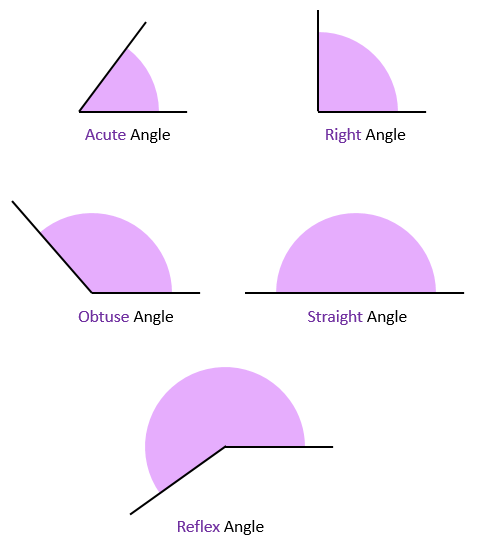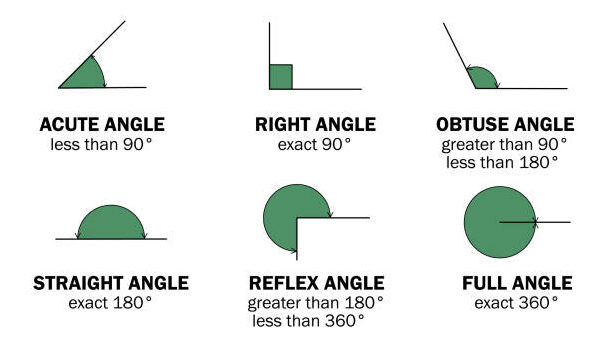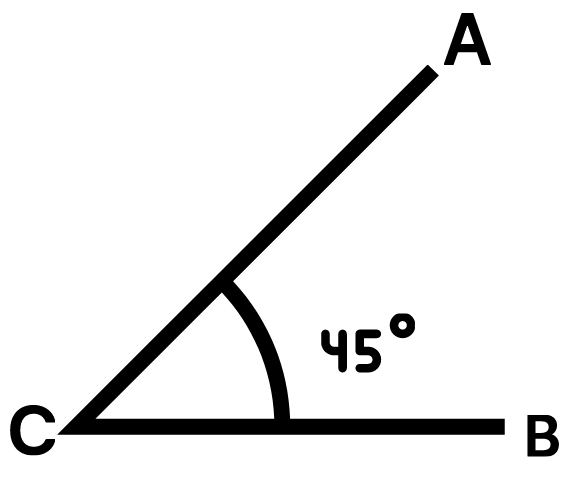Are you ready to embark on an exciting adventure into the world of angles? Get ready to explore the fascinating realm of acute angles, where geometry and fun collide! In this article, we’ll delve into the question of how many degrees an acute angle measures. So, fasten your seatbelts and let’s dive in! It’s worth knowing that Brighterly.com, the best online math learning site for kids, will help us with this.
Understanding Angles: A Magical Journey
Angles are like secret codes that unlock the language of shapes. They tell us how much a shape is bent or turned. Just like superheroes have unique powers, angles possess special properties. One such angle is the acute angle.

Unleashing the Mystery: How Many Degrees in an Acute Angle?
Now, let’s answer the burning question: how many degrees does an acute angle actually measure? Brace yourself for the answer—it can be any value between 0 and 89 degrees! That’s right; an acute angle can be as tiny as a ladybug’s sneeze or as large as an ant’s leap.
So, the next time you spot a triangular traffic sign or a rooftop peak, remember that those pointy angles are acute angles with a measurement less than 90 degrees. They are everywhere, hiding in plain sight, waiting for you to discover their magic!
How to Measure an Acute Angle?
If you want to measure an acute angle, you’ll need a superhero tool called a protractor. This mighty instrument helps us determine the exact number of degrees in an angle. Place the center of the protractor at the angle’s vertex (the point where the two lines meet), align one side of the angle with the protractor’s baseline, and read the number where the other side intersects the protractor’s scale.
Angle Lingo: Let’s Learn the Vocabulary!
As with any adventure, it’s essential to learn the language of the land you’re exploring. Here are a few key terms related to acute angles that you’ll find helpful:
- Vertex: The point where two lines or sides of an angle meet.
- Baseline: The bottom line of the protractor where we align one side of the angle for measurement.
- Scale: The numbers on the protractor that help us read the measurement of an angle.
Unlocking the World of Acute Angles: Where Are They Found?
Acute angles can be found in various everyday objects and situations. Let’s explore a few fascinating examples:
- Nature’s Beauty: Look closely at the branches of a tree or the veins in a leaf. You’ll notice that they often form acute angles at their intersections.
- Sports Galore: Pay attention to the angles formed in your favorite sports. A baseball diamond, a soccer goal, or a basketball court all house acute angles.
- Architecture Marvels: Take a stroll around your neighborhood, and you’ll spot acute angles in the corners of buildings, the rooflines, and even in the shapes of windows and doors.
The Marvelous World of Angles Awaits!
Congratulations! You’ve now embarked on a journey into the enchanting realm of acute angles. From the tiniest of creatures to the grandest of structures, acute angles can be found everywhere, adding beauty and structure to our world.
So, my young mathematicians, keep your eyes open, your protractors handy, and continue exploring the magic of angles. Who knows what other secrets you’ll uncover along the way?
Remember, the world of mathematics is full of wonders waiting to be discovered. And as you dive deeper into the universe of angles, the more you’ll appreciate the hidden language of shapes that surrounds us every day.
The Art of Acute Angles: Creating Beautiful Designs
Did you know that acute angles play a significant role in the world of art and design? Artists and designers utilize acute angles to create visually stunning compositions and captivating patterns. From intricate mosaics to bold geometric prints, acute angles bring a sense of dynamic energy and balance to artistic creations. So, whether you’re an aspiring artist or simply appreciate the beauty of art, keep an eye out for acute angles in your favorite artworks—they might just inspire your own masterpieces!
Acute Angles in Everyday Life: A Practical Perspective
Beyond their presence in nature and architecture, acute angles have practical applications in our daily lives. Think about the blades of scissors or the pointed tips of pencils—both are examples of acute angles at work. Acute angles also come into play when we open doors or fold a piece of paper. So, the next time you engage in these ordinary activities, take a moment to appreciate the role acute angles play in making them possible.
Acute Angles in Mathematics: Unlocking the World of Trigonometry
Acute angles hold a special place in the field of mathematics, particularly in trigonometry. Trigonometry deals with the relationships between angles and sides of triangles, and acute angles serve as the foundation for trigonometric functions such as sine, cosine, and tangent. These functions help us solve real-world problems involving distances, heights, and angles. So, if you’re intrigued by the mysteries of trigonometry, mastering acute angles is an essential first step on your mathematical journey.
Fun with Acute Angles: Let’s Play Angle Detective!
Are you up for a thrilling challenge? Grab your magnifying glass and put on your detective hat—it’s time to become an Angle Detective! Take a walk around your surroundings and search for acute angles in unexpected places. Maybe you’ll spot acute angles in the branches of a tree, the shapes of your favorite toys, or even in the slices of pizza! Engaging in this exciting angle hunt will not only sharpen your observational skills but also deepen your understanding of acute angles in the world around you.
As you continue to explore and appreciate the wonders of acute angles, remember that their presence extends far beyond textbooks and mathematical formulas. Acute angles are the hidden heroes of geometry, waiting to be discovered in every corner of our universe. So, embrace the beauty, practicality, and mystery of acute angles, and let them guide you on your math-filled adventures!
Conclusion: Unleashing the Power of Acute Angles
In conclusion, acute angles are like little sparks of magic in the world of geometry. They bring energy, beauty, and structure to our surroundings. From the sharp corners of buildings to the delicate veins of leaves, acute angles are everywhere, waiting to be discovered.
We have learned that an acute angle measures less than 90 degrees and can range from the tiniest of measurements to just under a right angle. Armed with a protractor, we can accurately measure these angles and unlock their numerical value.
Acute angles have diverse applications in various fields. They add an artistic touch to designs, play a role in everyday objects, serve as the foundation for trigonometry, and can even be turned into exciting detective games.
So, whether you’re an artist, a mathematician, or simply curious about the world around you, acute angles invite you to explore, observe, and appreciate their presence. Embrace the wonders of acute angles, and let them inspire you to see the beauty of geometry in your everyday life.
Brighterly’s best online tutors will help you to better master the Acute Angle topic. They will be able to go through all the difficult topics in your child’s math in detail and fix it! More information about this is available here.


